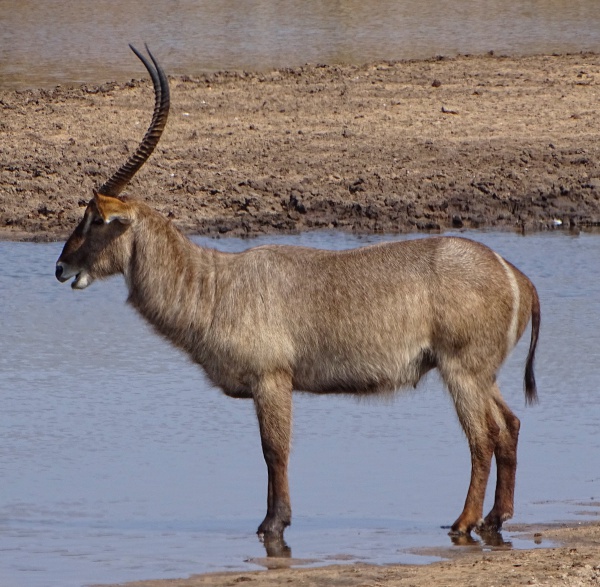Facts About Waterbuck
The waterbuck is a large antelope indigenous to sub-Saharan Africa, and it’s a captivating creature with distinctive traits. Classified under the genus Kobus in the Bovidae family, it was first described by William Ogilby in 1833. There are thirteen subspecies of waterbuck, divided into two main categories: the common or Ellipsiprymnus waterbuck and the Defassa waterbuck.
One intriguing aspect of waterbucks is sexual dimorphism—males and females differ in appearance. Males are taller and heavier and possess long, spiral horns, which females lack. Their coat color can range from brown to gray, adding to their unique appearance.
Waterbucks are social animals, typically found in groups of 6 to 30 individuals. These can comprise nursery herds, including females and their young, or bachelor herds of males. By the age of five, males begin to exhibit territorial behavior. Preferring to stay near water, they primarily graze on grasslands. Breeding occurs year-round in equatorial regions, with females giving birth to a single calf after a gestation period of seven to eight months.
Waterbucks are usually found in scrub and savanna areas close to water. Their distribution is limited by the specific conditions they require—mainly grasslands and water sources. The International Union for Conservation of Nature (IUCN) lists the waterbuck as Least Concern overall. However, the Defassa waterbuck is considered Near Threatened due to threats such as poaching and habitat disruption.
Waterbucks are not just another antelope; they exhibit unique behaviors and have specific environmental needs. Males are territorial, they form social herds, and they have a strong dependency on water. Ongoing research into their ecology and behavior aims to ensure these animals continue to thrive in the wild.

 The Gambia
The Gambia